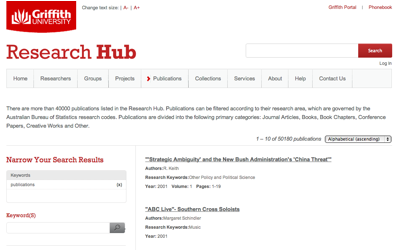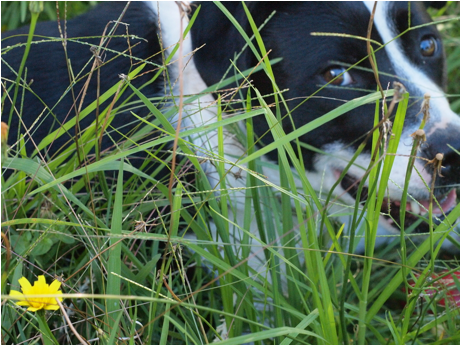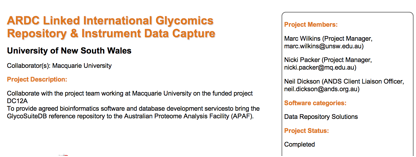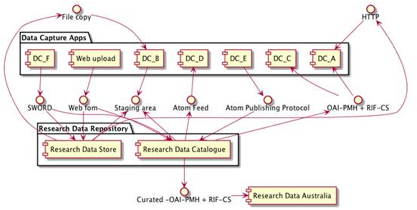I’m leading a brief session at the CAIRSS community days today (CAIRSS is the national repository support service for Australasia). The title is “Emerging Repository Software”, but I thought I’d turn that around and propose that the future of institutional repositories is to fade into the background.
Here are my notes for the session.
Take this screenshot of the Griffith University repository. See here’s the default browse-screen for publications.
The Griffith Publications repository

Hold on! That’s not the repository
This is the Research Hub which ties together data from a number of different sources to provide a joined-up view of publications in the context of other research information.
The repository has faded into the background
Much like this invisible dog.

But, this is not perfect
The ‘find it yourself’ button is sub-optimal:

And check out this URL:
That really should be something like: http://research-hub.griffith.edu.au/collections
There are two new kinds of repository we’re seeing in Australia, thanks to investment from the Australian National Data Service.
-
There are many “Data Capture” systems for researchers to manage data early in its lifecycle.
-
These feed into Data Catalogues or Data Repositories – there’s a lot of terminological confusion here because of the way the funding streams have been structured.
## Data capture Systems See the ANDS list of DC projects. Here’s one I selected at random:

It’s difficult to get useful information about many of these projects.
There are many data capture projects, and all of them will presumably need to be hooked up to systems like the Griffith Research Hub at some stage.
It’s a jungle out there, mount an expedition!

Data is are the new black
A few notable projects:
-
Lincoln’s ‘API first’ research data management app, Orbital.
-
Admiral at Oxford; a two-tier system (capture / archive).
-
Islandora in a few research data contexts.
See JISC’s Managing Research Data programme for more.
(I wanted to mention the Hydra Fedora-commons toolkit as well lots of work on archives and digital libraries).
The current opportunity for libraries
Use your metadata skills to help with “the great joining up”.
-
Get the governance right (see the ANDS view of this).
Research systems are for the researchers.
(So projects should report to the Deputy Vice Chancellor Research).
-
Start working with Research Data – not just on repositories, but on useful applications.
-
Get involved in tag-and-release programs for the feral data capture projects roaming Australia’s universities.
-
Do more work on ‘Digital library’ projects beyond the institutional publications repository.